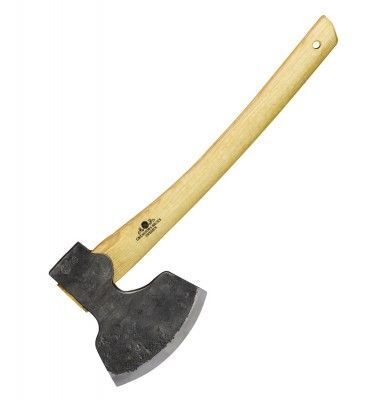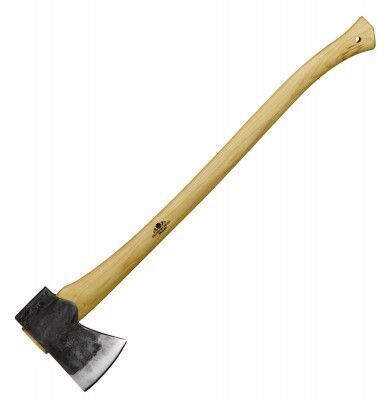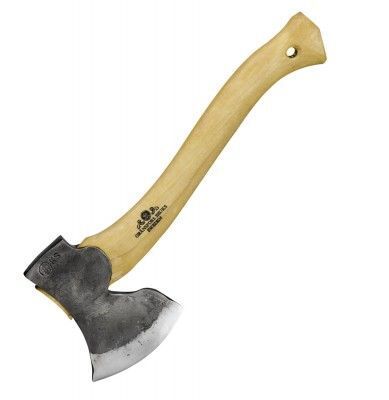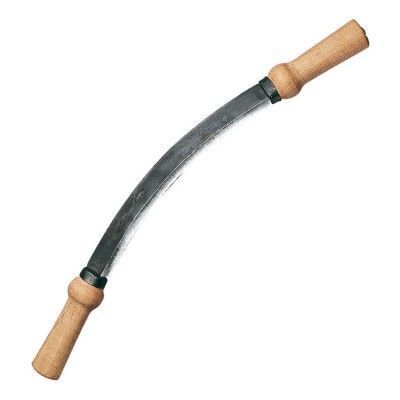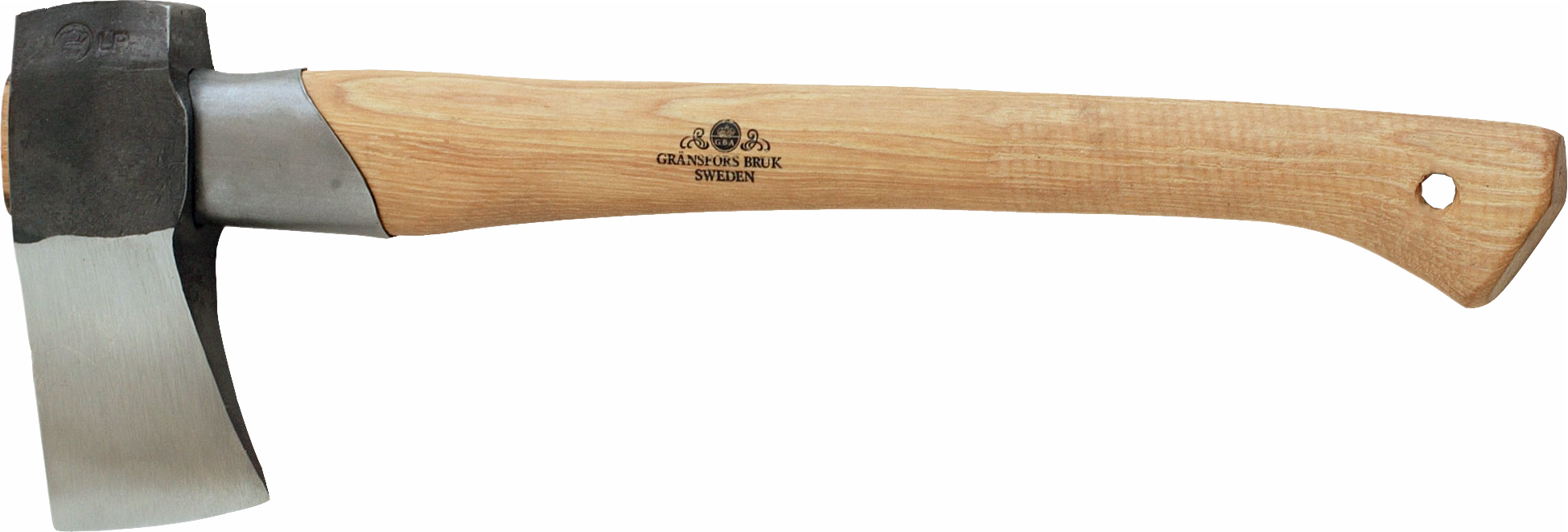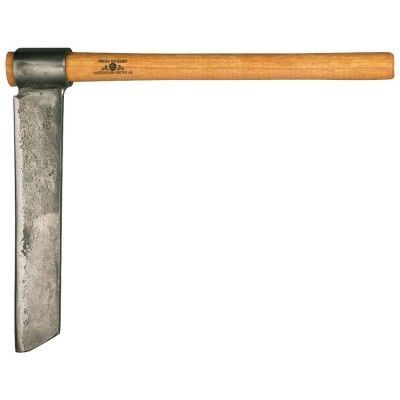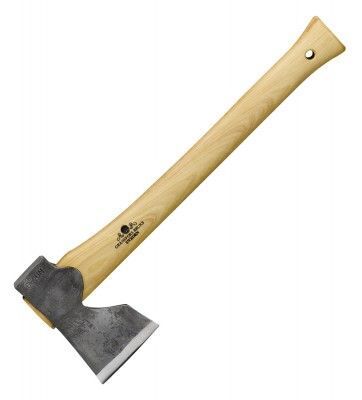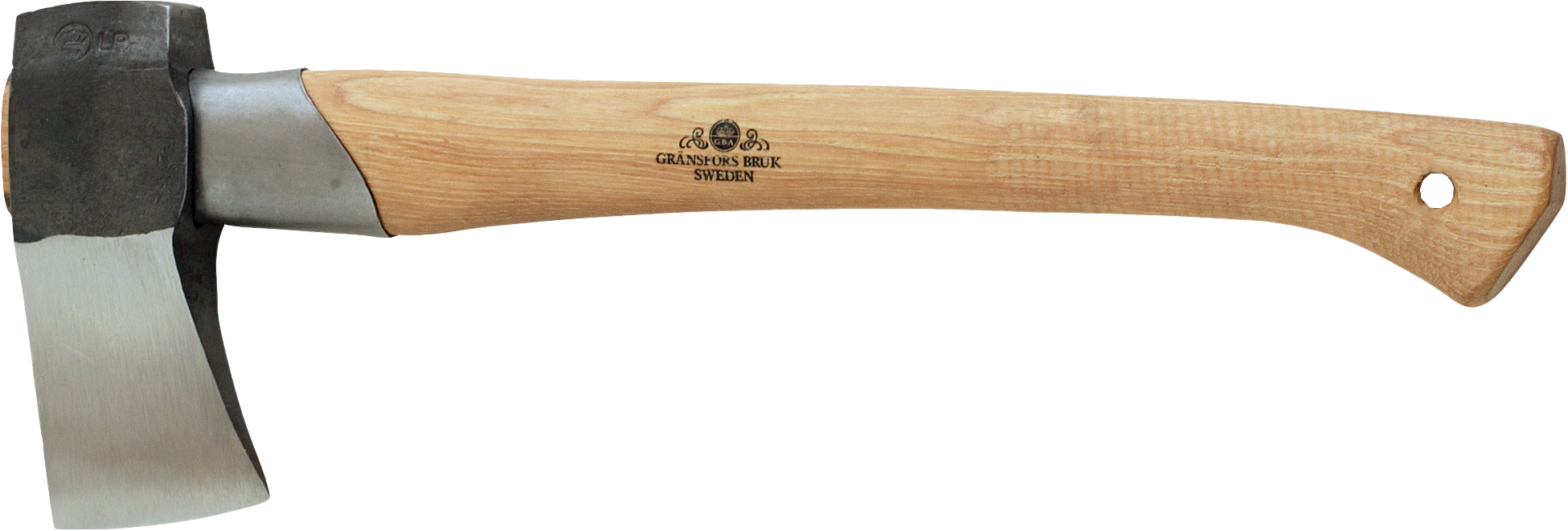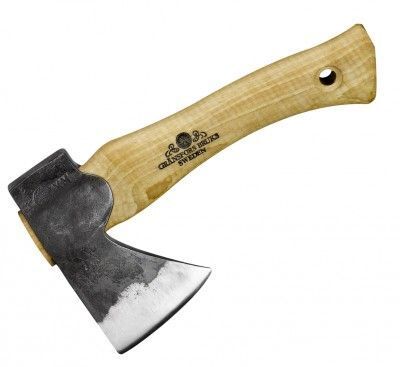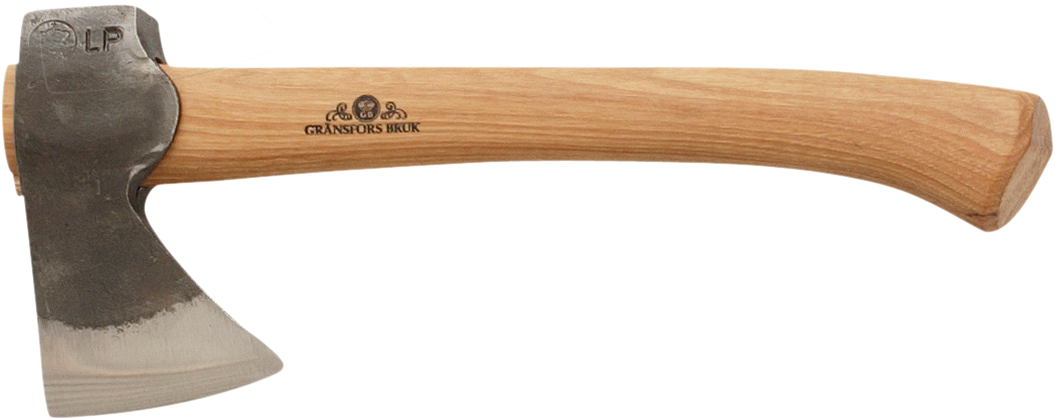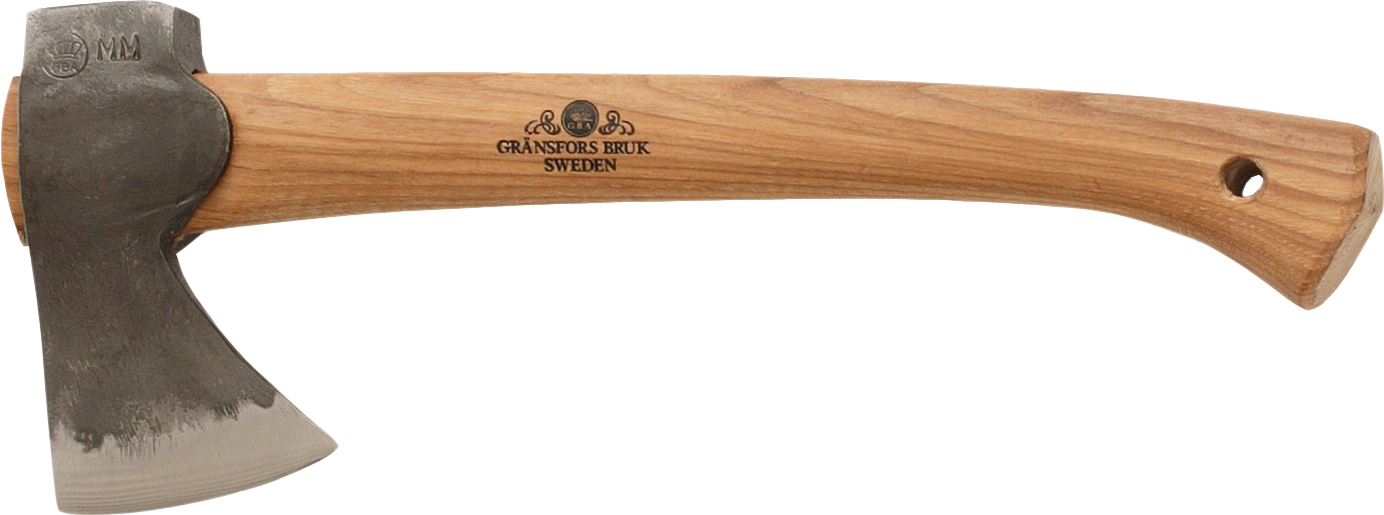Gränsfors Bruk
The traditional handmade axes from Gränsfors Bruk, which the company has been producing since 1902, come from the Swedish municipality of Nordanstig. The company was formed from a scythe smithy that had already existed in the 19th century at the place where the company was founded. Around 1870 the brothers Johan Pettersson (JP) and Anders Petterson (AP) laid the foundation stone for the later axe smithy and operated a scythe smithy in Gränsfors. The brothers developed their craft at exactly the right time, as logging boomed in northern Sweden in the second half of the 19th century. Mandatory tool: the axe!
The name of the company stands for the founding town of Gränsfors near Bergsjö in northern Sweden and a factory ('Bruk'), which used to be used by various companies involved in the cultivation and processing of iron and iron products. Only one 'Bruk' had the royal privileges to produce iron products.
However, Gränsfors Bruk was not such an industrial enterprise. Presumably the name had been given to the company in order to appear larger and more traditional. After 1859 this was also irrelevant, because in that year the royal privileges were abolished and competition broke out.
Changing years for the company
In the early 20th century, Olof Eriksson opened a hardware store in Bergsjö and sold, among other things, tools which he himself ordered from local manufacturers - including the axes from Gränsfors Bruk. As enterprising as Eriksson was, he participated in many business start-ups in the region and in 1917 took over Gränsfors Bruk. In the same year, Eriksson purchased an Arboga 35 forging press, which cost 17,000 Swedish crowns at the time and is still in use today. The modern forging press led to a sharp increase in axe production.
A few years later, however, it almost came to a standstill and Eriksson had to find new ways to make the company successful. In the 1920s he negotiated a contract with the Russian embassy in Stockholm for the export of axes to Russia. In the course of the years further export countries were added - above all South America and Canada, but also the USA, Australia, New Zealand, Finland and Latvia.
In the world economic crisis of the 1930s, production almost came to a standstill again, but picked up speed again when the 40s and 50s began. At that time Acel Wennerström was head of production, he was one of two workers at Gränsfors Bruk in the 1920s. Axel Bäckström was appointed managing director. Under their leadership, the company celebrated its 50th anniversary in 1952, produced nearly 200,000 axe heads with 40 employees, and was able to keep business high during and after the Second World War.
Modern machines and tools bring crisis
In the 60s and 70s, difficult years began for the company. On the one hand the woodcutting industry declined, on the other hand chainsaws were used more and more, so that the demand for axes decreased. Only the export and bankruptcy of other forges ensured that Gränsfors Bruk survived. Although the first oil crisis in the 1970s brought the demand for axes up again, the use of chainsaws in woodcutting became increasingly widespread. And exports also collapsed after the high demand during the oil crisis had concentrated on domestic, Finnish and Norwegian customers and neglected customers in America, Russia and other exporting countries.
A return to traditional craftsmanship
In 1985 Gränsfors Bruk was first closed and then sold to Svedbro Smide. The buying company used similar technology to produce cow feet and forestry tools. So far, Gränsfors Bruk had wanted to produce axes as quickly and cheaply as possible. As a result, however, the products lacked quality and the post-processing took a long time. At the end of the 80s it was therefore decided to refrain from piecework work and to revert to traditional production, which had been a priority at the beginning of the company's history. From then on, quality was more important than quantity. In the course of the innovations, Gränsfors Bruk also said goodbye to paints, varnishes and solvents or adhesives, with the positive side effect that Gränsfors Bruk was awarded for its environmentally friendly design in 1990.
Today the focus is clearly on the product axe
In retrospect, Gränsfors Bruk has made a very good decision to concentrate on traditional construction methods. And even today - despite numerous competition from chainsaw manufacturers and imitators of their own products - this technology enables them to maintain their position on the international market. That's why we continue to put a lot of ambition and passion into know-how and product development in order to stay ahead of the competition. Gränsfors Bruk continues to improve the design and functionality of its axes. Among other things, they developed the hunting hatchet in this way in 1995, which was voted "Outstanding Swedish Design".
The Gränsfors Bruk product range
The company now offers a wide range of forestry axes, splitting axes, double axes and tools for log house construction and carpenters. In addition, the company offers matching ceramic grinding stones, grinding files and cutting protection sleeves made of high-quality leather.
Forest Axes
Due to their long, rounded edge with a flat, long head, the forest axes are ideal for felling trees and cutting off thinner branches on the trunk. The long, quite thin cutting edge makes it easier to cut against the wood fibre. The company produces them in various sizes and designs, each specializing in a specific application. The American forest axe is primarily used for very large trees, while the mini axe can almost be used as a filleting knife - that's how narrow it is.
The perfect mixture of pruning and felling is offered by the Hunter's Axe, specially designed for the hunter's activities. It is suitable for cutting wood and meat. There are notches on the handle so that the axe can also be used safely with wet or glued hands. It also has a rounded neck that makes it easy to knock large game such as elk out of the blanket without damaging the animal's skin. An axe with sharp edges could damage the skin.
Splitting axes
Splitting axes have a relatively short cutting edge with a larger wedge angle and a large, heavy head, which makes it easier to split pieces of wood along the grain. At the same time, the axe does not get stuck in the wood so quickly if you want to split it in one fell swoop. A thinner head would get stuck. Gränsfors Bruk is currently producing the splitting axes in four different versions, which differ primarily in size.
Double axes
The double axes have two cutting edges on both sides of the handle. However, these are ground differently. This goes back to the woodcutters in the 20th century, who only had to take one axe with them into the forest with the double axe and were nevertheless able to carry out various activities. The double axes also served as entertainment, as the woodcutters were able to throw a target distance with them. Even today the double axes are mainly used in leisure time - i.e. in competitions with axe throwing.
Gränsfors Bruk in the online assortment of Titanium-Gunworks.de
We offer our customers from hunting and outdoor activities a wide range of Gränsfors Bruk products. You can find the hunter's hatchet as well as other axes in our assortment. In addition you will find splitting hammers, splitting wedges and pulling knives for the white carving of logs. We will be happy to advise you on the brand's offers and help you select the right product for your requirements and purposes.


